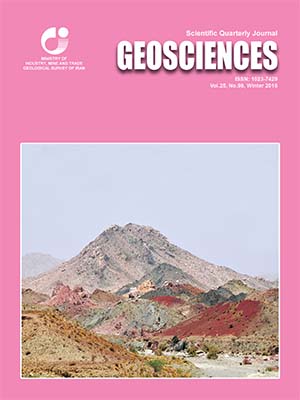Document Type : Original Research Paper
Authors
1 Ph.D., Department of Geology, Faculty of Science, University of Isfahan, Isfahan, Iran
2 Professor, Department of Geology, Faculty of Science, University of Isfahan, Isfahan, Iran
3 Ph.D., Department of Geology, Islamic Azad University Science and Research Branch, Tehran, Iran
4 Professor, Department of General and Analytical Chemistry, Montanuniversität, Leoben, Austria
5 Ph.D., Department of General and Analytical Chemistry, Montanuniversität, Leoben, Austria
Abstract
Picrites are seen within the mantle peridotites in the Darreh Deh area (in the east of Nain ophiolitic mélange). Based on petrography and mineral chemistry, these picrites are composed of olivine (chrysolite), clinopyroxene (diopside) and orthopyroxene (enstatite), showing a cumulate texture, and small amounts (less than 10 volume%) of plagioclase and chromian spinels as accessory minerals. Application of clinopyroxene geothermobarometry methods indicates the equilibrium temperatures of ~1040 to 1205 °C and pressure of 8.6 kbar for the clinopyroxene crystallization in the melt. Amphibole and talc crystallization and the results of amphibole thermobarometry (~675-700 °C, 4.8-6.5 kbar) indicates that these rocks have undergone metamorphismunder amphibolite facies in Jurassic, similar to their host mantle peridotites. Whole rock chemistry and chromian spinel composition confirm high partial melting degrees of mantle and progressive ascending melt/wall rock reactions in a suprasubduction zone in which tholeiitic melts were produced. During the production of this melt, picrites with cumulous texture formed within the mantle peridotites by precipitation of olivine, pyroxenes and minor amounts of intercumulous plagioclase crystals from the primitive melt.
Keywords

